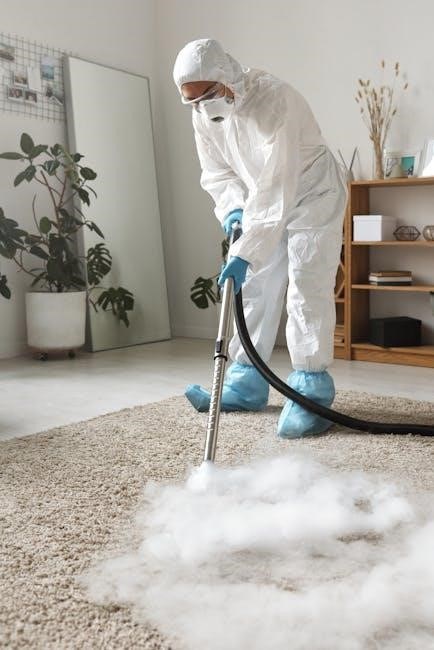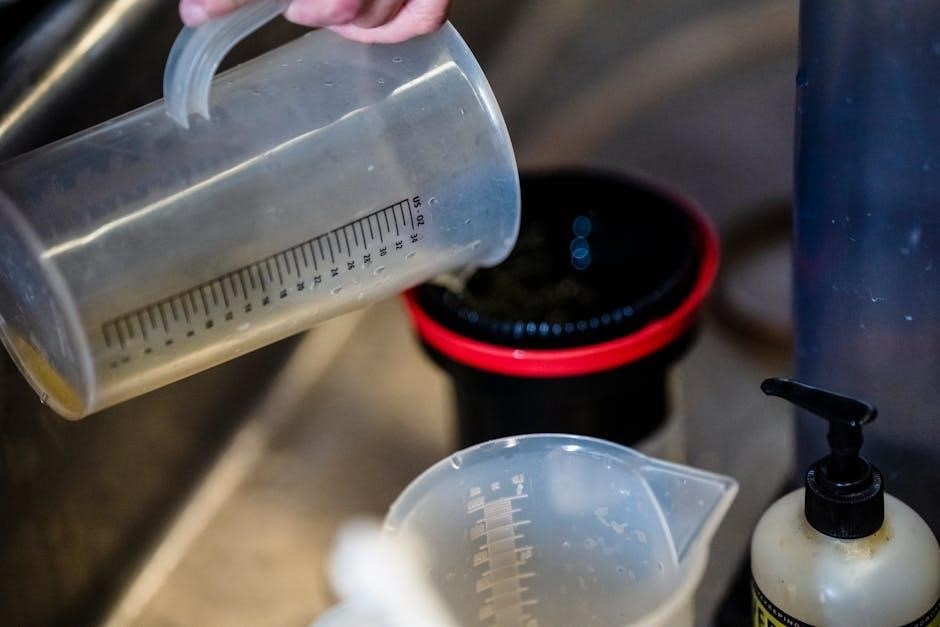Understanding the Sensory Processing Measure (SPM)
The Sensory Processing Measure (SPM) is a comprehensive assessment tool used to evaluate sensory processing issues, praxis, and behavioral responses in individuals, particularly children. It provides insights into how sensory information is processed and integrated, helping identify potential challenges linked to sensory processing difficulties. Widely used in educational and clinical settings, the SPM supports early identification and intervention for individuals with sensory-related needs.
What is the Sensory Processing Measure?
The Sensory Processing Measure (SPM) is a comprehensive assessment tool designed to evaluate sensory processing, praxis, and behavioral responses in individuals, particularly children. It is a rating scale system that provides insights into how sensory information is processed and integrated, helping to identify potential challenges linked to sensory processing difficulties. The SPM is widely used in educational and clinical settings to support early identification and intervention for individuals with sensory-related needs. It is available in different forms, including the SPM-2, the second edition, which is an American assessment guiding person-centered sensory processing interventions. The SPM is a valuable resource for occupational therapists, educators, and parents seeking to understand and address sensory processing issues in children.
Purpose and Scope of the SPM
The Sensory Processing Measure (SPM) is designed to assess sensory processing, praxis, and behavioral responses in individuals, primarily children, to identify sensory processing difficulties. Its primary purpose is to provide a comprehensive evaluation of how sensory information is processed and integrated, offering insights into challenges that may affect daily functioning. The SPM is widely used in educational and clinical settings, including schools and occupational therapy practices, to guide interventions and support strategies. It is particularly valuable for understanding sensory-related needs and developing personalized approaches to improve learning, behavior, and overall well-being. The SPM’s scope extends to various environments, including home, classroom, and school settings, making it a versatile tool for professionals and caregivers alike.

Accessing the Sensory Processing Measure for Free

The Sensory Processing Measure (SPM) can be accessed for free through various online platforms offering PDF downloads, providing cost-effective solutions for professionals and parents seeking assessments.
Where to Find Free SPM PDFs Online
Free SPM PDFs can be found on platforms like PDF Drive, Open Library, and Free-Ebooks.net, which offer extensive collections of downloadable resources. These websites allow users to search for specific documents, including the Sensory Processing Measure, using keywords or file types. Additionally, some educational and research websites provide free access to SPM PDFs for academic or personal use. Utilizing AI-powered tools like PDF Finder can streamline the search process, ensuring quick and accurate results. Always verify the credibility of the source to ensure the PDF is genuine and up-to-date. This approach makes accessing the SPM convenient and cost-effective for professionals and parents alike.

Benefits of Using Free SPM PDFs
Using free SPM PDFs offers numerous advantages, particularly for professionals, educators, and parents seeking cost-effective solutions. These resources provide immediate access to sensory processing assessments without financial barriers, making them ideal for budget-conscious users. Free SPM PDFs are often easily downloadable, ensuring convenience and time efficiency. They enable early identification of sensory processing difficulties, allowing for timely interventions. Additionally, these resources are accessible to a global audience, breaking geographical constraints. For educators and therapists, free SPM PDFs serve as valuable tools for supporting students with sensory challenges. Parents can also benefit by gaining insights into their child’s sensory needs. Overall, free SPM PDFs democratize access to essential assessment tools, fostering inclusivity and support for individuals with sensory processing needs.
Components of the Sensory Processing Measure

The SPM includes forms for home, classroom, and school environments, assessing sensory processing, praxis, and behavioral responses. It provides a comprehensive evaluation of sensory integration challenges.
SPM Forms: Home, Main Classroom, and School Environments
The SPM offers three distinct forms tailored to different settings, ensuring a holistic assessment of sensory processing. The Home Form is completed by parents or caregivers, capturing sensory behaviors in daily routines and family environments. The Main Classroom Form is filled out by primary teachers, focusing on academic and social interactions. Additionally, the School Environments Form assesses sensory responses in various school settings, such as playgrounds or cafeterias. Together, these forms provide a well-rounded view of an individual’s sensory processing challenges, aiding in personalized intervention strategies. This multi-environment approach ensures comprehensive data collection, essential for accurate assessments and effective support plans.

Key Assessments and Scales in the SPM
The SPM incorporates a range of standardized assessments and scales designed to evaluate sensory processing abilities across multiple domains. These include scales for visual, auditory, tactile, and vestibular processing, as well as praxis and sensory modulation. Each scale provides detailed insights into specific sensory challenges, enabling professionals to identify patterns and severity of sensory processing difficulties. The assessments are tailored to capture how individuals respond to sensory stimuli in various contexts, offering a comprehensive profile of their sensory processing strengths and needs. By leveraging these tools, educators and therapists can develop targeted interventions to support individuals with sensory processing challenges, ensuring personalized and effective care.

SPM and Sensory Processing Disorder (SPD)
The SPM is a valuable tool for identifying traits associated with Sensory Processing Disorder (SPD), helping professionals assess sensory challenges and develop targeted interventions.
How the SPM Helps Identify SPD Traits
The Sensory Processing Measure (SPM) plays a crucial role in identifying traits associated with Sensory Processing Disorder (SPD) by assessing sensory processing challenges. It evaluates how individuals process sensory information across different environments, such as home, school, and classroom settings; The SPM includes rating scales that measure sensory modulation, praxis, and behavioral responses, providing insights into sensory-related difficulties. By analyzing these assessments, professionals can identify patterns that align with SPD traits, such as over- or under-responsiveness to sensory stimuli. The tool helps differentiate between typical sensory processing variations and potential disorders, offering a foundation for further evaluation and intervention strategies. This makes the SPM a valuable resource for occupational therapists and educators working with individuals who may exhibit SPD characteristics.

Challenges in Diagnosing and Assessing SPD
Diagnosing and assessing Sensory Processing Disorder (SPD) presents significant challenges due to the lack of formal diagnostic criteria and inconsistent recognition across professionals. Sensory processing difficulties often overlap with other conditions, making it hard to isolate SPD-specific traits. The subjective nature of sensory experiences and the absence of a universally accepted diagnostic framework further complicate accurate identification. Additionally, sensory processing challenges can vary widely in severity and manifestation, adding to the complexity of assessment. These factors contribute to delays in early identification, particularly for autistic girls and women, who are often underdiagnosed. Despite tools like the SPM, standardized approaches remain elusive, highlighting the need for continued research and collaboration among professionals to improve diagnostic accuracy and accessibility.
Using the SPM in Educational and Clinical Settings
The SPM aids educators and clinicians in identifying sensory processing challenges, enabling targeted interventions and support strategies in both school and therapeutic environments effectively.
Role of SPM in Schools and Classrooms
The Sensory Processing Measure (SPM) plays a crucial role in schools and classrooms by helping educators identify sensory processing challenges in students. Teachers use the SPM to assess how sensory difficulties may impact a child’s ability to focus, behave, and engage in learning activities. The Main Classroom Form, completed by teachers, provides insights into a student’s sensory-related behaviors in an academic setting. This tool enables educators to develop targeted strategies, such as environmental modifications or sensory breaks, to support students with sensory processing needs. By addressing these challenges, the SPM helps create a more inclusive and supportive learning environment, ensuring students can thrive academically and socially. It also serves as a valuable resource for informing individualized education plans (IEPs) and collaborating with occupational therapists to meet students’ needs effectively.
SPM Applications in Occupational Therapy
The Sensory Processing Measure (SPM) is a vital tool in occupational therapy, aiding therapists in assessing and addressing sensory processing challenges in individuals, particularly children. By evaluating sensory-related behaviors and responses, the SPM helps occupational therapists identify specific areas of difficulty, such as sensory modulation, praxis, and behavioral responses. This information is crucial for developing targeted interventions to improve sensory integration and motor skills, enabling individuals to function more effectively in daily activities.
The SPM also supports the creation of personalized treatment plans, ensuring therapies are tailored to meet the unique needs of each individual. This tool enhances the therapist’s ability to monitor progress and adjust strategies as needed, fostering a more effective and adaptive approach to sensory processing interventions.

Future of Sensory Processing Assessments
The future of sensory processing assessments lies in digital tools and AI-driven evaluations, offering streamlined and accessible ways to identify and address sensory processing challenges remotely.

Emerging Trends in At-Home Sensory Measures
At-home sensory measures are gaining popularity, offering parents and caregivers accessible tools to assess and support sensory development. Free PDF resources, such as questionnaires and checklists, enable early identification of sensory processing challenges without professional intervention. These tools often include practical strategies for creating sensory-friendly environments and promoting self-regulation. The rise of DIY sensory assessments reflects a growing awareness of sensory processing difficulties and the demand for user-friendly solutions. By leveraging digital platforms, at-home measures are becoming more efficient, allowing families to address sensory needs proactively and inclusively. This shift empowers caregivers to take an active role in supporting sensory health, bridging the gap between clinical and home-based care.
Digital Tools and AI in Sensory Processing Evaluation
Digital tools and AI are revolutionizing sensory processing evaluation by enhancing accuracy and accessibility. AI-powered platforms can analyze sensory data, providing deeper insights into processing patterns and identifying potential challenges. Automated scoring systems, like those in SPM-2, streamline assessment processes, reducing human error and saving time. Additionally, AI-driven solutions enable real-time feedback, allowing professionals to tailor interventions more effectively. Digital tools also facilitate remote assessments, breaking down geographical barriers and making sensory evaluations more accessible. These innovations not only improve the efficiency of sensory processing assessments but also pave the way for personalized and data-driven approaches to sensory care, ensuring better outcomes for individuals with sensory processing difficulties.
